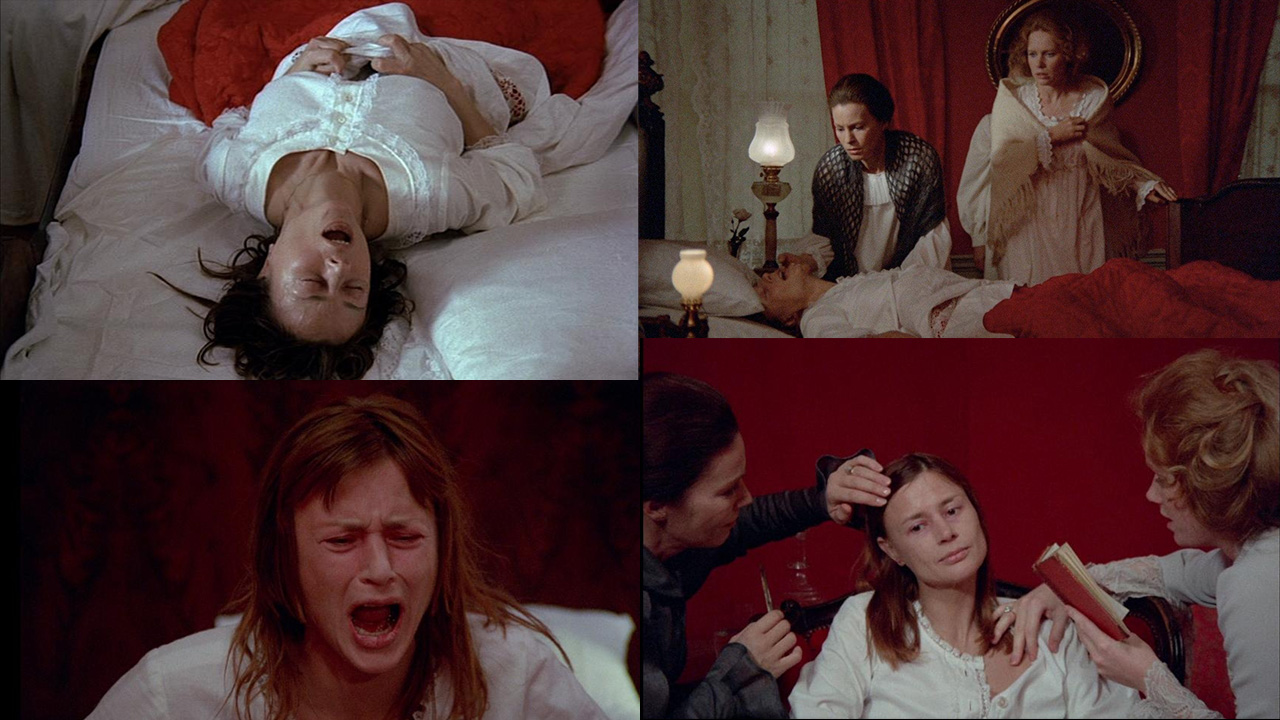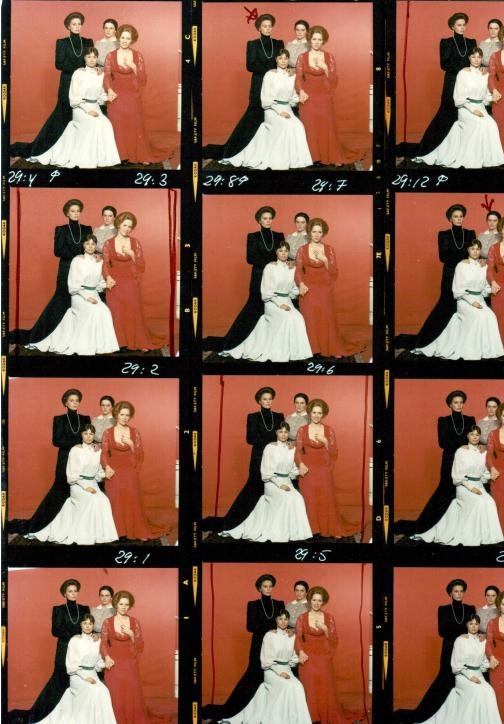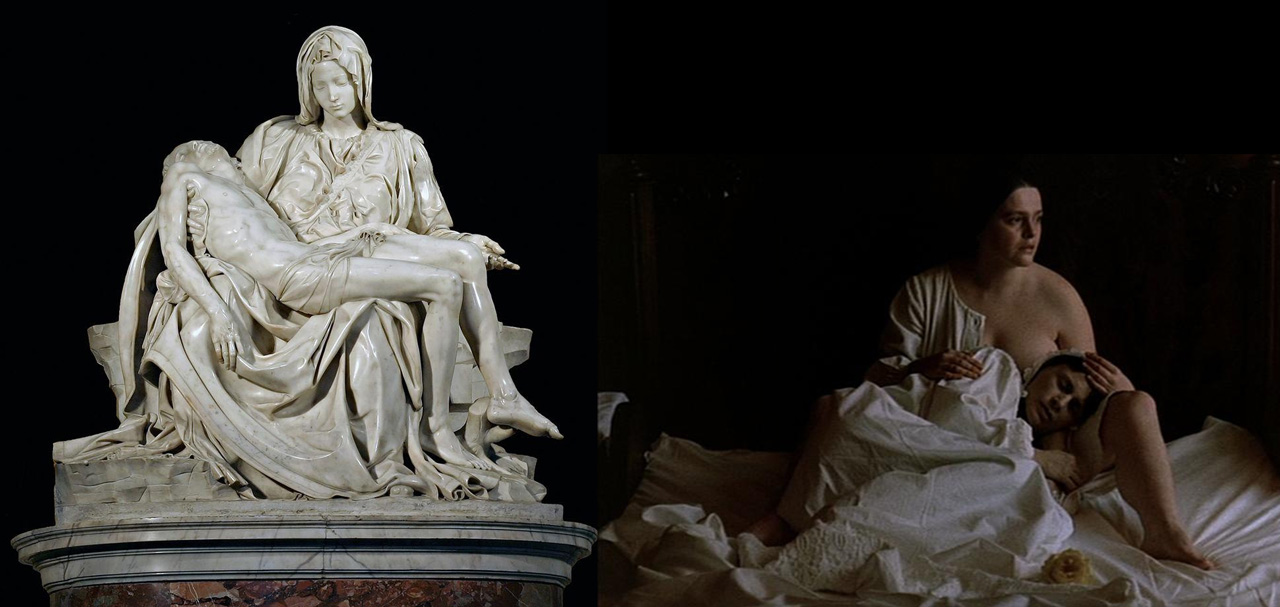Costume and Set Design in Ingmar Bergman’s Cries and Whispers
In his book “Images”, Ingmar Bergman recalled that the same scene kept popping up in front of him for a year: “A red room and women in white clothes. They were moving, whispering, behaving in an extreme degree of mystery. Time after time I discarded this vision, refusing to base it on the movie (or anything else). But the vision persisted, and I grudgingly explained it: three women are waiting for the fourth to die. They take turns on duty.
“All my movies,” the director continues, ”could have been black and white, except for Whispers and Screams. The script says that I conceived of the color red as an expression of the essence of the soul. As a child, I envisioned the soul as a smoky-blue, shadow-like dragon, some huge soaring winged creature – half bird, half fish. But inside, the dragon was solid red.”

Red is the dominant color throughout the film. It is perhaps the reddest movie in cinematic history. The overwhelming scarlet hues of the film, somewhat softened by the black and white colors of the dresses and sheets, refer not only to the “soul” but literally to the human gut. “Screams and Whispers” is about the physical body, the process of dying and, more importantly, coming to terms with death. Everything we see on the screen is subordinated to the idea of inner suffering, death, alienation and the impossibility of true intimacy.
Colors play a key role in the film, enhancing the psychological and emotional depth of the story. The movie is set at the turn of the century in a secluded family estate. The main character Agnes (Harriet Andersson) suffers from a fatal illness. At her bedside are her sisters Maria (Liv Ullmann), Karin (Ingrid Thulin), and the family maid Anna (Kari Sylvan). The movie focuses on the final stages of her agony and the days after her death.

Marik Vos-Lundh, one of the most prominent figures in the history of Swedish costume design and set design, was responsible for the costumes and sets in the movie. Vos and Bergman have worked together on numerous films and theatrical productions and share a viewpoint on scenography where a dominant and constant color is welcomed to create a mood.

Color is very important, as it is the many shades of red that give the film a sense of tension. As we can all assume, red can stand for love, hate, blood, fever, passion or anger. The red walls serve almost as a womb for these women and is certainly a place where the idea of blood kinship is questioned. And it seems that the red living room in their childhood home is the only place where an attempt at dialog is still possible. But does anyone need it?
Although the action takes place at the turn of the century, Vos didn’t design the dresses to look historically accurate. They have the shape of that era (late 19th century), but without the elaborate details. The costumes were not meant to distract the viewer from the narrative, but instead just support it.
The blood-red rooms in Screams and Whispers, where the women in the movie are in stark contrast to their turn-of-the-century white and black dresses, have made visual movie history.
The rooms of the three sisters are decorated almost identically – suggesting an outward equality, but internally each is completely different and this can be seen through their clothing as well.

Agnes is dressed in white throughout the movie. White is a symbol of purity and spirituality, but at the same time this color is associated with illness and death, including the shroud.

Maria – the younger sister – is a charming and flirtatious lady, openly emotional and affectionate, but this is only on the outside, deep down she is superficial and deceitful. She prefers orcovered seductive dresses with lace and deep necklines. Her overt sexuality is revealed through her clothes.

Karin, the eldest sister, is a cold and unfeeling character, not only towards herself, but also towards others. She is often seen in dark colors, and most often in black. She wears clothes that cover her body as much as possible, with long sleeves and a high neck. Clothes are like armor to her, because for Karin, contact with this world is unbearable. Karin wears many layers of clothing, which we see in the scene where the maid Anna helps her undress and prepares her for bed. It is a long but interesting scene in which we see all the layers of clothing used to dress a lady of that era: she removes jewelry, dress, petticoats, corset, robe, stockings, and then puts on a nightgown and robe.
If Maria uses clothing to seduce and show off her body, Karin, on the contrary, uses layering as protection, camouflage.


In the second part of the painting, the white clothes are replaced by black. This happens first in flecks (as a premonition of tragedy) and then completely.

One of the strongest scenes in the movie is the shot of Anna holding the dead Agnes, a direct reference to Pietà. But Bergman replaces the Virgin Mary with a maid and Christ with a
woman dying in pain. This is not a religious image, but an earthly one. There is not holiness in this pose, but compassion, touching someone else’s pain and wanting to help deal with it. It is the most bodily, intimate, scene in the film – and it is not between the sisters, but between the maid and the mistress, which further emphasizes the rift in the family, the coldness, alienation and indifference between loved ones.
Bergman created a movie where form equals content. The costumes, décor and visuals are not just decoration, but a language through which the ideas of pain, loneliness, inability to love and fear of death are conveyed.

Screams and Whispers is a film depicting human behavior in the face of death.